In the 2010 book — A Dog’s Purpose, author W. Bruce Cameron examines life from a canine perspective, searching for the answer to the titular question: what is a dog’s purpose in life?
The dogs in the story live such varied lives that the question may not have a singular answer.
Could it be a simple matter of biology: to reproduce and create offspring with the strongest genes?
Is it to provide labor and services to humans in exchange for food and shelter?
Or is the meaning of a dog’s life to love and be loved by others?
If you’ve ever looked at your dog and gotten lost in existential pondering, read on — a little bit of philosophy can go a long way towards a deeper understanding of your dog!
The Meaning of a Dog’s Life: An Evolving Matter
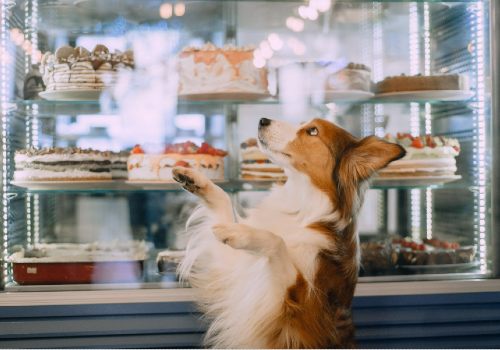
Purpose at the Dawn of Domestication
Before dogs were domesticated by humans, their lives — and any meaning behind them — were extraordinarily different.
20,000 years ago, packs of wolves and groups of human hunter-gatherers roamed the planet separately. The two species were likely quite fearful of each other — wolves had powerful claws and teeth, while humans had spears and other crafty weapons.
Life back then was about survival and not much else. Philosophizing about one’s purpose probably wasn’t a priority compared to finding food, seeking shelter, and avoiding predators.
But that began to change once humans and canines began to interact.
It’s believed that domestication began when curious wolves toned down their aggression long enough to approach humans — and curious humans allowed them to do so. If the human hunters had extra meat on hand, they’d throw the leftovers to the wolves, who learned to associate friendly humans with food.
A symbiotic relationship between wolves and humans began to form. Wolves started following humans, protecting us from other predators in exchange for some of our food.
And before long, as we grew accustomed to each others’ company, the relationship between our two species deepened from transactional to truly friendly.
The wolves that lived with us diverged genetically from their more wild forebears. They became more docile, took on cuter appearances, and developed a seemingly inherent loyalty to us.
In other words, they became domestic dogs.
A Dog’s Domestic Destiny
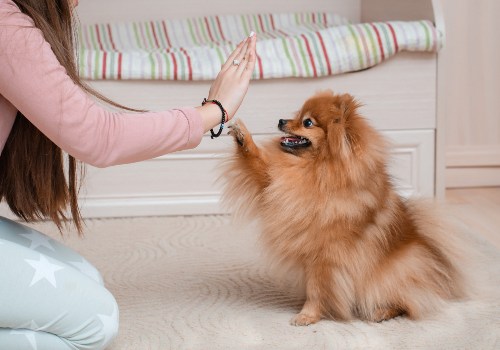
Throughout human history, philosophy and other pursuits of the mind have been shown to flourish during times of prosperity.
It makes sense: when food and shelter are plentiful, you have more energy and brainpower to devote to big questions like the meaning of life.
While we don’t know how deeply dogs ponder their existences, it would add up that if they do, domestication probably enabled them to do so much more frequently.
We provided them with good food, places to sleep, and other dogs with whom to breed. Survival on a day-to-day basis — their purpose up until that point — wasn’t much of a concern for them anymore.
But what happens when you take away a creature’s purpose? How do they carve out new meanings for their lives — and just what are those meanings, anyway?
You’re probably not going to get a straight answer out of your dog, but we’ve got a few theories for you to check out.
A Dog’s Purpose: 3 Potential Explanations
A Dog’s Purpose Is to Work
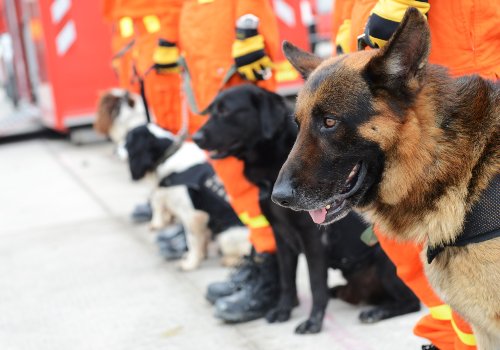
As much as our ancestors enjoyed the company of their dogs, friendship wasn’t the primary reason for their partnership.
And although dogs didn’t need to focus all their energy on mere survival thanks to our help, they didn’t want to lead idle existences, either.
That’s why nearly every dog breed, both past, and present, was created to perform specific kinds of work.
Take the Shetland Sheepdog (aka the Sheltie), a herding dog from Scotland that was bred for agility and alertness in order to round up sheep.
Or the Siberian Husky, a sled dog whose endurance and strength proved critical to human survival in the coldest regions of the planet.
At first glance, it’s easy to dismiss this as a case of forced purpose: can a dog’s purpose really be to work if we’re the ones that made them that way to begin with?
But the types of work that dogs do are extensions of their natural drives and talents. And if a dog isn’t able to exercise those traits, it can have disastrous results.
Shelties, for instance, are instinctively good at running, chasing, and navigating their environment. But if a Sheltie doesn’t have anything to herd (or pretend to herd), it becomes anxious, restless, and depressed — sometimes to the point of harming itself or others.
And Retrievers, which were bred to excel at tracking and swimming, behave and feel their best when they’re working alongside hunters. Failing that, they need a daily outlet for these energies or they become stressed-out, high-strung, and destructive.
A dog’s need to work seems to go beyond mere boredom or under-stimulation. Work doesn’t just give a dog an outlet for his energy — in many cases, it gives him a reason to live.
In the words of Greger Larson, an evolutionary geneticist from Oxford University who specializes in animal domestication, “a dog’s purpose is to be the fuzziest Swiss army knife of all time, making itself useful and helpful in hundreds of ways, including many we have yet to imagine.”
A Dog’s Purpose Is to Help Us
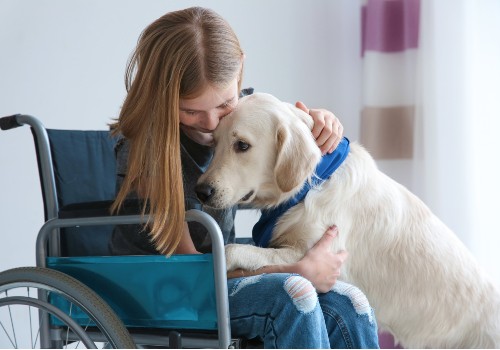
When wolves began interacting with humans, it wasn’t out of compassion. Socializing with us was a means to an end: hang out with humans, be rewarded with their food and protection.
Over thousands of years, that’s changed. Compassion towards humans is now baked into your dog’s DNA, and this manifests itself in many different ways.
When we think of dogs helping humans, the first things that come to mind are service dogs. We’ve trained dogs to utilize their incredible noses, excellent hearing, fantastic strength, and stellar navigation to assist those of us who need it most.
What’s more, some dogs can even train themselves to help us.
Jennifer Arnold, the founder of Canine Assistants service dog school, says that 90% of the dogs in her school teach themselves how to detect seizures — despite the fact that we don’t know how to train them to do so.
She believes that a service dog’s bond with its owner is so strong that instinct takes over. The dog is so attuned to its owner that it knows immediately when something’s wrong, and all it can do is help through whatever means necessary.
This suggests that dogs find purpose in assisting and caring for those around them, in much the same way as parents find purpose in raising their children, or doctors find purpose in saving lives.
But dogs may also find purpose in helping us in more abstract, conceptual ways.
Which brings us to our final theory of a dog’s purpose…
A Dog’s Purpose Is to Love
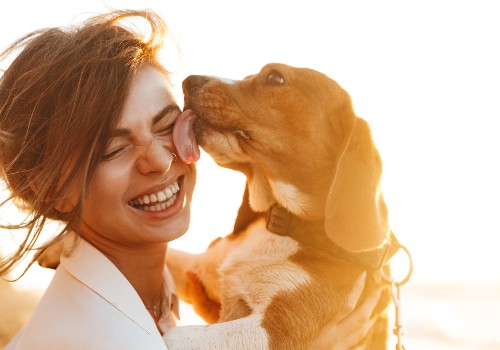
The saying “it’s a dog’s life” doesn’t exactly paint canine existence as inspiring. It denotes dullness, difficulty, discomfort, and misery.
And maybe that was the case back in the 16th century when the phrase was first coined. But we think it might be time to redefine it for our modern age: these days, so much of a dog’s life is about love.
From cuddle time on the couch to belly rubs on the floor to presents from Santa Paws on Christmas, we devote a ton of time and energy to showing our dogs that we love them.
And at times, our love becomes truly selfless. Dog owners have been known to spend their last dollars on dog food over people’s food, and whole communities have come together to raise money for a neighbor’s dog’s vet bills.
When we act with selfless love, we produce a hormone called oxytocin that helps our brains cement the bond between us and our loved ones. Dogs, with their superpowered noses, can smell oxytocin, which helps them reciprocate the bond — and our affections.
Love is such a fulfilling thing to feel: once you experience it, you want to seek it out again and again. Maybe dogs have been loving us for so long that they’re now hardwired for it, and vice versa.
And their love may extend beyond individual humans, to humanity in general.
Dr. Norman Wirzba, a professor of Theology and Ecology at Duke University, believes that a dog’s purpose is just like ours: to exist as an integral part of a beautiful world, and to help and honor those who exist alongside it.
“Life with dogs is better because through them we understand something about the world and about life that we could not know without them,” he says. “Maybe that means a purpose, certainly not the only purpose, of a dog’s life is to help us live better as people.”
By being so close to us, dogs introduce us to different perspectives and ways of life, helping us not just as individuals but as an entire ecosystem. With our horizons broadened, we can become more compassionate towards ourselves, other people, other creatures, and our world.
If that’s not love, then what is?
